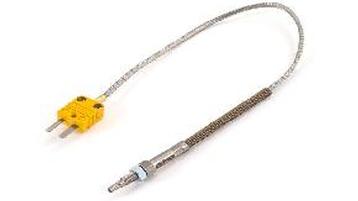Tech Tips
Why SwedeTech Doesn’t Provide EGT Numbers or Ranges

Exhaust Gas Temperature ( EGT ) is a very common and useful tuning aid for 2-stroke engines. SwedeTech Racing Engines is asked many times a week, “ What should I run for EGT? “
Keep in mind that EGT is very sensitive, which is one reason it is a good tuning aid. Many factors affect the reading or recording of your exhaust gas temperature.
Here is a list of variables:
- This distance of the EGT sensor from the face of the piston. Whether you have a fixed EGT sensor position like you would on some exhaust or a variable position if you are tuning with exhaust spacers. We typically recommend placing the sensor approximately 4.5 inches away from the exhaust side of the piston. Before you drill and weld a bung on the pipe, make sure your sensor will not interfere with either an exhaust manifold, exhaust springs, your seat, chassis, seat struts, etc.
- Changing exhaust components such as flex length, silencers, back pressure pills, spacers, and other common tested items will affect the EGT reading. Coatings and treatments will also affect your EGT reading. Always read your rulebook when you want to test certain items. Most associations have specifications for the exhaust system.
- Different fuels and different oil mixture ratios will also affect your EGT. When jetting and establishing your EGT baselines, always use the same fuel and oil that is required for the events you are testing for.
Jetting is a very big factor that will affect your EGT. This is one reason many people use EGT, as proper EGT notes will help you tune your engine for peak performance. The basic idea on jetting vs EGT is, the leaner the jetting ( less fuel to air ), the hotter the EGT. The richer (fatter – more fuel to air) the jetting, the cooler the exhast gas temperature. Keep in mind, this is a very simplistic description. It is not uncommon for the engine to run lean, but have a cooler EGT. This is were your data system comes in.
Once you have your engine tuned to the point that you are happy with the performance, download your data to a computer and review the EGT curves. Heat is created as the fuel ignites, too much fuel (rich condition) in the system and not all the fuel will have time to completely ignite, unable to create enough heat. The resulting left over fuel will cool your EGT. This can cause the piston or spark plug to be wet when you complete a proper plug chop.
You may find that if the engine is running to lean, the EGT will actually decrease as well. Think of your fuel as energy. If you are starving your engine for fuel, it will not have the energy to create heat. Some indication that you are running to lean maybe small oil like droplets that are burned into the top of the piston, or a white or grey exhaust carbon color on the inside of your header or exhaust pipe.
You will want to review your data for the optimum EGT readings that created the most power. Once you have done this a few times, you will see a pattern develop and the range your engine prefers to run. The EGT measurement is very sensitive, so you may find that you have two “identical” setups that run at different EGT.

